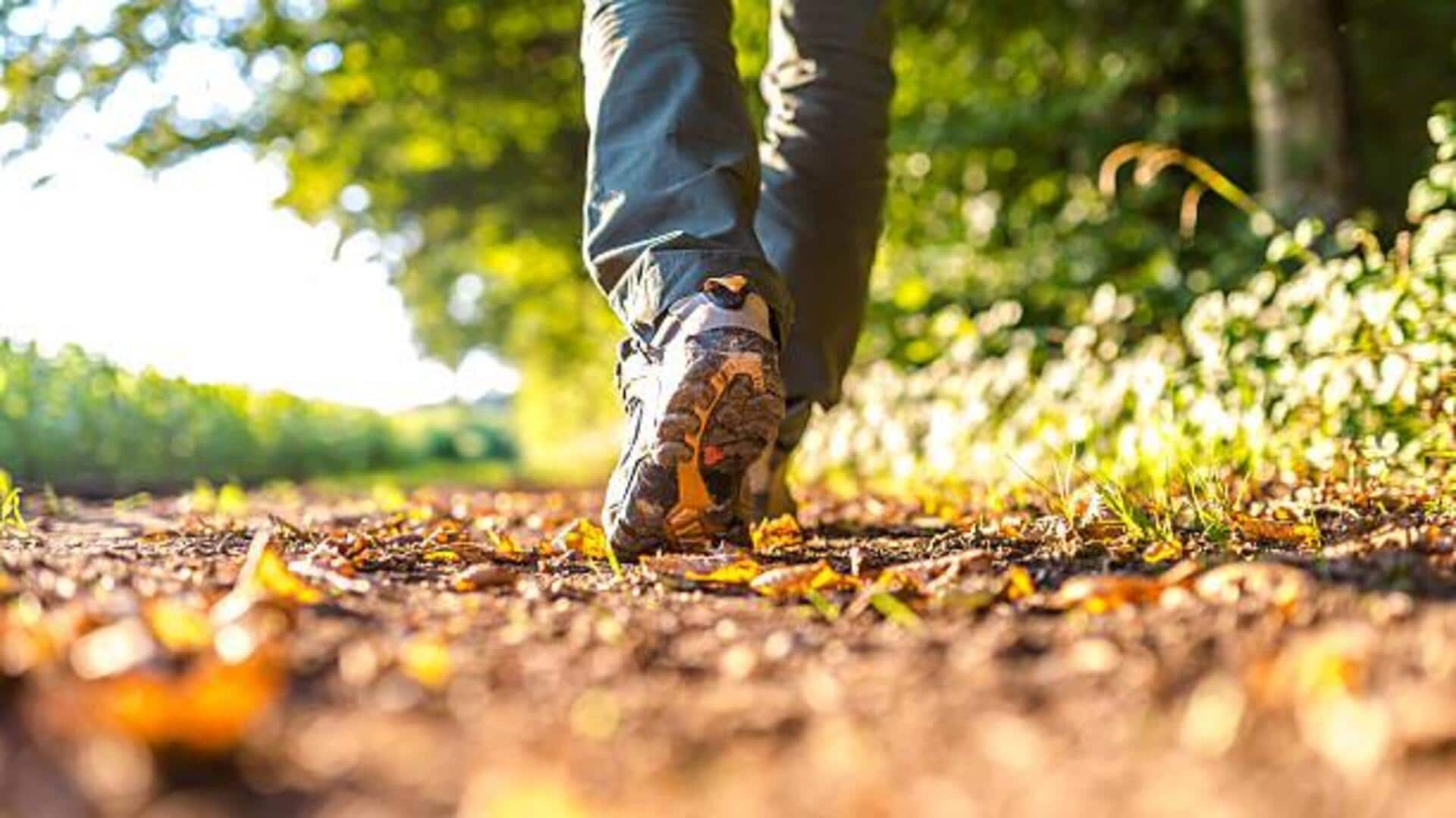
Nature walking 101: 5 tips for beginners
What's the story
Nature walking is one of the best ways to boost health and enjoy the great outdoors. It's a low-impact exercise that even beginners can easily incorporate into their daily routines. Since it doesn't require much equipment, it is accessible to many, providing immense physical and mental benefits. These simple tips will help make the nature walking experience even better for beginner health enthusiasts.
Tip 1
Choose the right footwear
Selecting appropriate footwear is important for comfort and safety during nature walks. Choose shoes that have good support and traction to avoid slipping on uneven terrain. Lightweight hiking boots or sturdy sneakers often make good choices. Make sure your shoes fit well to avoid blisters or discomfort during longer walks.
Tip 2
Start with short distances
Going short distances also helps beginners build endurance gradually. You can aim for walks lasting around 20 to 30 minutes to begin with and then increase the duration slowly as your fitness improves. This way, you can avoid fatigue, reduce the risk of injury, and give yourself time to enjoy the surroundings.
Tip 3
Stay hydrated
The importance of carrying water cannot be stressed enough when going out for a nature walk, particularly during warm weather or on longer trails. Staying hydrated keeps your energy levels up and ensures that you don't end up dehydrated with headaches or dizziness. You may want to invest in a reusable water bottle that can be conveniently stuffed into a backpack.
Tip 4
Dress appropriately for weather conditions
Wearing appropriate clothes according to the weather can also make your nature walks more comfortable. In cooler weather, layering your clothes allows you to adjust as required, while breathable fabrics are perfect for warmer days. A hat or sunscreen may be required when strolling under direct sunlight.
Tip 5
Be mindful of your surroundings
Paying attention to your surroundings not only ensures safety but also makes your nature walks more enjoyable. Stick to marked paths where possible, keep an eye out for wildlife, and listen closely for any potential hazards like falling branches or cyclists approaching you if you're sharing trails with others.